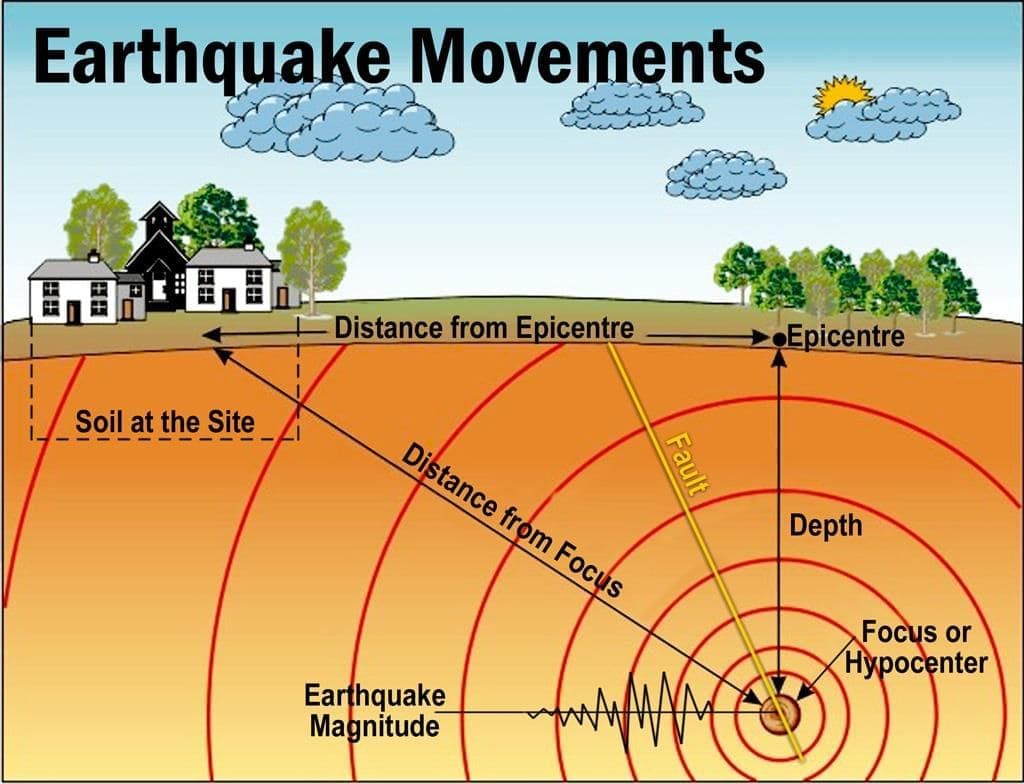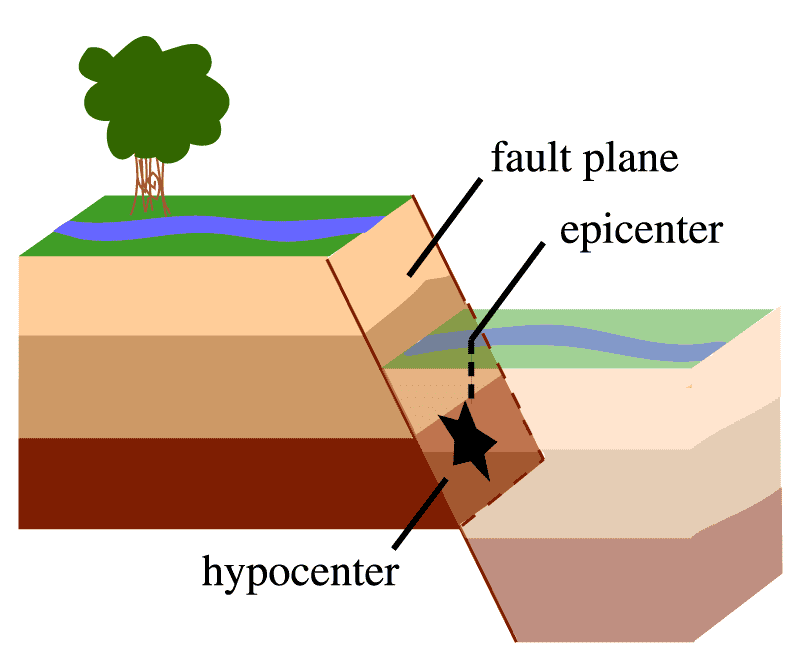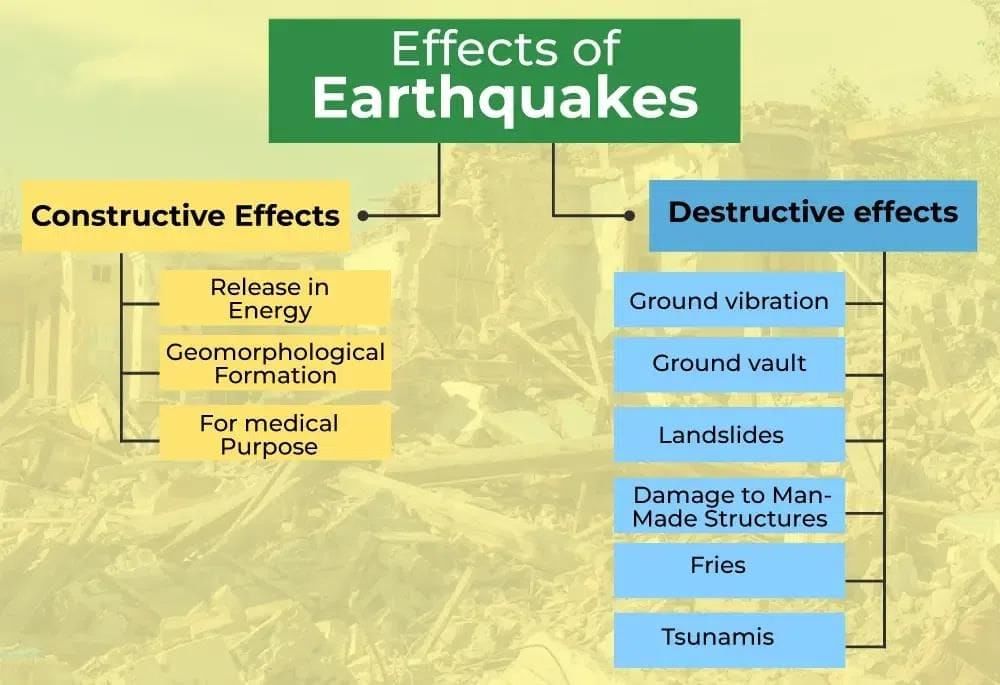Grade 4 Exam > Grade 4 Notes > Science for Grade 4 > Chapter Notes: Model Earthquake Movement
Model Earthquake Movement Chapter Notes | Science for Grade 4 PDF Download
| Table of contents |

|
| Introduction |

|
| What is Earthquake Movement? |

|
| Modeling Earthquake Movement |

|
| Effects of Earthquake Movement |

|
| Staying Safe During Earthquakes |

|
Introduction
Earthquakes are exciting and powerful events that happen when the Earth shakes! In this chapter, we learn about why the ground moves during an earthquake and how we can show this movement using fun models. We’ll also explore what happens to objects, people, and animals when the ground shakes, and discover ways to stay safe. These notes will help you understand earthquakes in a simple and fun way!
What is Earthquake Movement?

- Earthquake movement is when the ground shakes because big pieces of the Earth’s surface, called plates, move against each other.
- The shaking happens because these plates bump, slide, or push each other.
- There are different kinds of earthquake movements:
- Shaking: The ground moves side to side or up and down, like when you wiggle a table or shake a rug.
- Rolling: The ground feels like it’s moving in waves, like when you’re on a boat in water.
- Sudden Jolts: The ground gives a quick push or jerk, like a fast bump when you’re riding a bike.
- Earthquakes happen because the Earth’s plates are always moving slowly, and sometimes they get stuck and then slip, causing the ground to shake.
Modeling Earthquake Movement

- Models are like toys or tools we use to show how the ground moves during an earthquake.
- Models help us see and understand things that are hard to see, like the Earth’s plates moving underground.
- Examples of models we can make or use:
- Shaking a Tray: Put toy blocks, houses, or small objects on a tray. Shake the tray gently or strongly to show how the ground moves in an earthquake.
- Paper Plate Model: Use two paper plates to act like Earth’s plates. Slide them past each other or push them together to show how plates move and cause shaking.
- Jell-O or Sand Model: Put small toys or objects on a pan of Jell-O or sand. Shake the pan to see how things wobble, move, or fall, just like in a real earthquake.
- What we observe in models:
- Toy houses or blocks might tip over, slide, or fall off when the “ground” shakes.
- Objects move differently depending on how hard or fast you shake the model.
- This helps us understand how earthquakes affect things in the real world.
- Models make it fun and easy to learn about earthquakes by showing how the ground moves!
Effects of Earthquake Movement

- When the ground shakes in an earthquake, it can affect many things around us.
- Effects on objects:
- Buildings, trees, or toys can wobble, shake, or fall over during an earthquake.
- The ground might crack, like when you break a cracker in half.
- Roads, bridges, or houses can get damaged if the shaking is very strong.
- Effects on people and animals:
- Shaking makes it hard for people to stand, walk, or run safely.
- Animals might get scared, lose their homes, or have trouble finding safe places to hide.
- Real-world connection:
- Strong earthquakes can damage homes, schools, or other buildings.
- People build stronger houses in places where earthquakes happen a lot to keep everyone safe.
- Learning about earthquakes helps us understand why we need to be prepared.
Staying Safe During Earthquakes

- It’s important to know what to do if the ground starts shaking to stay safe.
- Safety actions to practice:
- Drop, Cover, and Hold On:
- Drop to the ground so you don’t fall.
- Get under a strong table or desk to protect yourself.
- Hold on to the table or desk until the shaking stops.
- Stay away from windows, shelves, or heavy objects that might fall on you.
- If you’re outside, move to an open area away from buildings, trees, or power lines.
- Drop, Cover, and Hold On:
- Engineering solutions:
- We can make buildings stronger so they don’t fall during earthquakes.
- In models, try using wider bases or stronger materials (like tape or clay) to keep toy buildings standing when you shake them.
- Engineers use special designs, like flexible materials or strong shapes, to make real buildings safer.
The document Model Earthquake Movement Chapter Notes | Science for Grade 4 is a part of the Grade 4 Course Science for Grade 4.
All you need of Grade 4 at this link: Grade 4
|
26 videos|122 docs|37 tests
|
FAQs on Model Earthquake Movement Chapter Notes - Science for Grade 4
| 1. What causes earthquake movement? |  |
Ans.Earthquake movement is caused by the sudden release of energy in the Earth's crust, which generates seismic waves. This release often occurs along faults where tectonic plates interact, such as converging, diverging, or sliding past each other.
| 2. How do scientists model earthquake movement? |  |
Ans.Scientists model earthquake movement using various techniques, including computer simulations and physical models. They analyze historical earthquake data, study geology and tectonics, and utilize mathematical equations to predict how seismic waves will behave during an earthquake.
| 3. What are the primary effects of earthquake movement on the environment? |  |
Ans.The primary effects of earthquake movement on the environment include ground shaking, surface rupture, landslides, tsunamis, and changes to the landscape. These effects can lead to significant damage to buildings, roads, and ecosystems.
| 4. What should people do to stay safe during an earthquake? |  |
Ans.To stay safe during an earthquake, people should follow a few key steps: drop to the ground, take cover under sturdy furniture, and hold on until the shaking stops. It is also important to stay indoors away from windows and to have an emergency plan in place.
| 5. How do earthquakes impact human structures and communities? |  |
Ans.Earthquakes can severely impact human structures and communities by causing buildings to collapse, damaging infrastructure like roads and bridges, and disrupting essential services such as water and electricity. This can lead to injuries, loss of life, and significant economic challenges for the affected areas.
Related Searches














